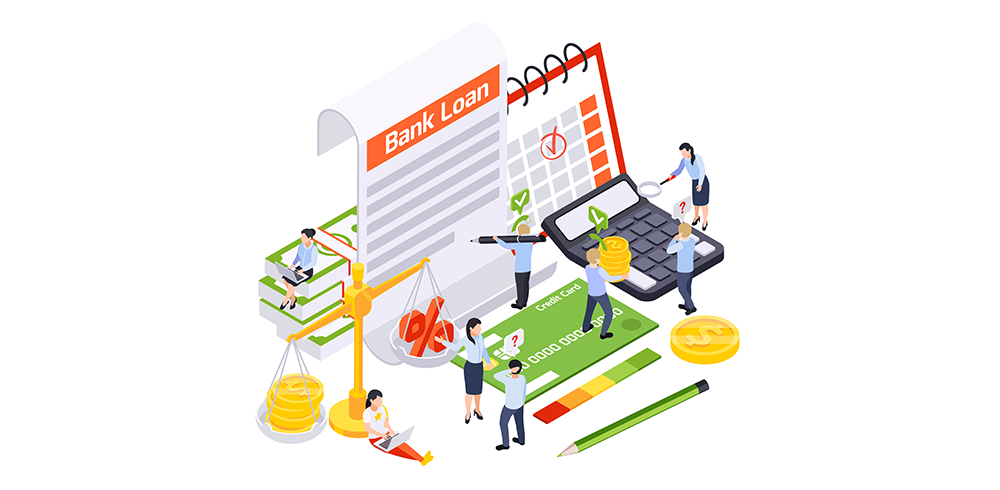Whenever you have a financial crunch, you can always avail a personal loan and get your work done. Whether it is for education, travel, or any other personal requirement, you can always rely on personal loans to get the funds. But getting a personal loan is often a big step as you need to consider a lot of things including repayment options, interest rates, and more before availing the offer. But once you have got the loan amount, how would you keep track of the funds and manage everything smartly?
Well, that’s where your personal loan statement can help you. In this guide, we will be focusing on learning the basics of a personal loan statement, what it includes, and how you can check and download your personal loan statement.
What is a Personal Loan Statement?
A personal loan statement is a document that shows every detail of your loan account, including your name, loan amount, interest rates, loan tenure, repayment schedule, EMIs paid, and other key aspects of your personal loan. In other words, it is your financial report that outlines the important segments of the loan you have availed. A personal loan statement is of great use as it helps you keep track of your payments and understand the overall status of your loan. The statement is generated every month and is accessible both online and offline by the borrower.
Terms In a Personal Loan Statement
The more you understand terms in a personal loan statement, the better you can manage your loan. So, here are some important loan statement terms you should be aware of:
- Principal Amount: The amount you borrowed
- Interest Rate: The percentage charged on the borrowed amount
- EMI (Equated Monthly Instalment): Your fixed monthly payment that includes both the principal and interest.
- Loan Tenure: The time period over which you would repay the loan.
- Outstanding Balance: The amount you still owe to the lender.
- Penalties: Extra charges for late payments and other dues.
- Disbursement Details: Information about when and how the loan amount was given to you.
- Repayment Schedule: The plan showing your payment due dates and amounts.
- Closure Details: Information confirming that the loan has been fully paid off.
Also Read – What Is a Loan? Components, Types & Tips On Getting a Loan
What’s On a Personal Loan Statement?
Your personal loan statement has several important components that offer a summary of your loan. You must understand these elements as knowing them would certainly help you in effective financial management. So, here we go:
Borrower Information
This includes your full name, contact details, and other personal information.
Loan Details
These details include all the basics about the loan including the principal amount, which is the initial amount borrowed, interest rate, the percentage charged on the borrowed sum, and loan tenure, and the duration for which the loan has been sanctioned. Your personal loan statement would also show whether the interest charged on it is fixed or variable.
Transaction History
A detailed record of all transactions related to your personal loan is also included in the statement. With this, you would be able to know about your EMI (Equated Monthly Instalment) payment details.
Repayment Schedule
The personal loan statement also shows your repayment plan including due dates and amounts. If you have any penalties or charges incurred for late payments or any outstanding balance, the statement will mention them.
Disbursement and Closure Details
Information about the disbursal of the loan amount and the confirmation of loan closure is also given.

Details Required to Check Your Loan Statement & How to Download It
Before you move ahead and start checking your loan statement, you should be aware of the details you need to have handy. This would not only save you time but also make the process smooth for you. Here are the major details required to check your loan statement:
- Loan Account Number – This is the unique ID of your loan. Check for it on your loan documents.
- Registered Mobile Number – You may need it to verify OTP.
- Email ID – To access your loan account statement and other loan updates and documents.
- Login Credentials (Username and Password) – For checking online loan statements.
- Identity Proof – A valid ID to verify your details, especially when you visit a physical branch for a loan statement.
How To Download The Loan Statement
Once you view your statement on the website or the mobile app, go to the option provided on the page to download it. Choose the preferred format and save the file to your device. Voila, you have all the details of your personal loan in your hands.
Ways to Check Loan Details Online
Now that you understand what a personal loan statement includes and how to download it, let’s take a look and understand the major ways through which you can check the statement.
Most lenders offer online loan statements and here’s how you can check them online:
- Website
Log in to your bank’s online banking portal using your credentials. For Cashe, you need to visit the official website www.cashe.co.in. Once you have logged into your account, go to the loan section or account summary and look for the option related to your loan statement.
- Mobile Banking App
You can also download and install the mobile app on your smartphone. Log in to the app using your credentials and then again, find the loan section and access your statement. On the app, you can also find an option for downloading loan statements in PDF format.
- SMS/E-mail Alerts
Some banks provide a mini-statement via SMS. You just need to send a message with your loan details. You can also check your email inbox for monthly loan statements sent by your lender.
Options to Check Loan Details Offline
Here are some options for checking loan statements offline:
- Customer Care Assistance
You can contact your bank’s customer care. You can then request assistance in obtaining a copy of your loan statement.
- Bank Branch
If you wish to have hard copies, then you can also visit your bank’s branch and request a physical copy of your loan account statement. Make sure you carry a valid ID proof and other loan documents with you.
FAQs
1. What is a loan statement?
A loan statement is a document that shows details about your loan such as the amount you borrowed, the interest rate, the payments you have made, and the amount you still owe.
2. How do I get my loan statement?
You can get your loan statement by logging into your bank’s website, using the bank’s mobile app, checking SMS or email alerts, calling customer care, or visiting your bank branch for a hard copy.
3. What is an annual loan statement?
An annual loan statement is a summary of all your loan activities over the past year. This usually includes payments made, interest charged, and remaining balance.
4. What details are included in a personal loan statement?
A personal loan statement includes your personal information, loan amount, interest rate, repayment schedule, payment history, and any remaining balance.
5. Can I use the statement from my personal loan for taxes?
Yes, you can use your loan statement for taxes, especially to show interest paid if it’s tax-deductible.








